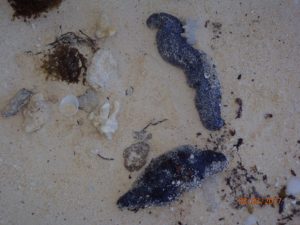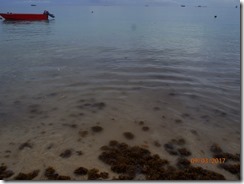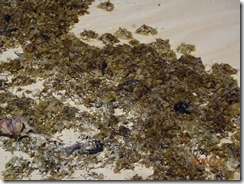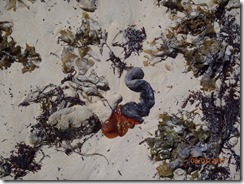 Early in the morning at about 7:50 am on the 8th of March 2017, a report was made to the Fisheries Department that there were extensive numbers of sea cucumbers called lollyfish (Holothuria atra) scattered on the Funafuti seashore. Many of the animals were dead, while some were still active. Lollyfish is a common shallow water species commonly found on all nine of Tuvalu’s atolls and islands.
Early in the morning at about 7:50 am on the 8th of March 2017, a report was made to the Fisheries Department that there were extensive numbers of sea cucumbers called lollyfish (Holothuria atra) scattered on the Funafuti seashore. Many of the animals were dead, while some were still active. Lollyfish is a common shallow water species commonly found on all nine of Tuvalu’s atolls and islands.
The sea cucumbers, an important part of the lagoon ecosystem, turned up on the lagoon shore near a residential area of the main island of Fogafale. According to comments from people living close to the area, nothing like this has ever happened in Funafuti before.
Two groups of fisheries officers went out to investigate. One team went out to the coastline water to take readings of the temperature and turbidity (cloudiness) of the water in the affected area. The other team did their best to rescue as many of the lolly fish as they could by transferring live ones back into the water in a clearer nearby coastal area.
According to the fisheries officers, it is thought the sea cucumbers were affected by ‘anoxia’, a situation in which the level of oxygen in the environment drops suddenly, often as a result of still, hot and high nutrient conditions. Patches of of black sediment were found supporting the diagnosis. The black colour is caused by the presence of hydrogen sulphide, indicating toxic conditions. The waters appear to have reached a state in which the level of dissolved oxygen was depleted, causing the animals to suffocate.
Causes of the sea cucumber kill could include poor water circulation related to a nearby reclamation, the accumulation or dumping of materials, such as rubbish, the death of large amounts of algae, and sewage, bilge pumping or other forms of nutrient pollution. Sea cucumbers are known to be sediment filters and help to keep the lagoon clean.



